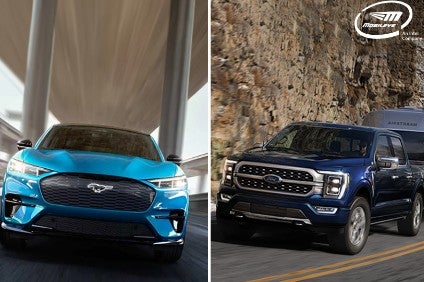
Ford and Intel company Mobileye said they were expanding their relationship to offer better camera based detection capabilities for driver assist systems, including improved forward collision warning, vehicle, pedestrian and cyclist detection, plus lane keeping features.
Mobileye will provide its range of EyeQ sensing technology for Ford's optional Co-Pilot360 Technology driver assist features such as lane keeping system, auto high beam headlamps, pre-collision assist with automatic emergency braking and adaptive cruise control with stop and go and lane Centring.
Ford will display Mobileye's logo in its SYNC driver assist communication displays, so customers are aware that some technology features use Mobileye sensing capability.
The technology will be used in Ford models worldwide.
"By customising Mobileye's excellent software and sensing technology, [our] driver assist features will continue to evolve and provide customers with confidence on the road throughout the life of their vehicles" – Ford
Lisa Drake, Ford's North America COO and global purchasing chief, said in a statement. "By customising Mobileye's excellent software and sensing technology, [our] driver assist features will continue to evolve and provide customers with confidence on the road throughout the life of their vehicles."
As well as EyeQ devices, Mobileye will supply vision processing software to support Level 1 and Level 2 driver assistance systems in Ford vehicles worldwide.
How well do you really know your competitors?
Access the most comprehensive Company Profiles on the market, powered by GlobalData. Save hours of research. Gain competitive edge.

Thank you!
Your download email will arrive shortly
Not ready to buy yet? Download a free sample
We are confident about the unique quality of our Company Profiles. However, we want you to make the most beneficial decision for your business, so we offer a free sample that you can download by submitting the below form
By GlobalDataLevel 1 systems are defined by the Society of Automotive Engineers as automating a single part of the driving experience, such as steering or acceleration/deceleration, while Level 2 systems provide both steering and acceleration/braking support.
Both require drivers to supervise performance of the vehicle.
New Ford production vehicles will use the EyeQ computer chips and software to support features in the Co-Pilot360 system and help identify what the windscreen camera in a vehicle can see – including lane markings, traffic signs, pedestrians and other vehicles.
This latest technology is destined first for the upcoming Mustang Mach-E and just-announced redesigned F-150.
Ford will use the Mobileye technology throughout the product life of next generation vehicles as well as future products offering advanced ADAS.
The two companies have worked together "for years" but Ford noted this was the first time it had committed to Mobileye technology for the entire lifecycle of its vehicles.
Both parties will work with designated Ford Tier 1 suppliers to supply the technology for vehicle integration.
Ford also is evaluating the use of Roadbook in its vehicles.
Roadbook uses anonymised, crowd sourced data from vehicle cameras to build a high definition map that can be accessed by vehicles and leveraged by ADA, including hands free driving features like its optional Active Drive Assist.
New production Ford vehicles will use EyeQ3 and EyeQ4 for Level 1 and Level 2 advanced ADAS platforms.
The partners claim the EyeQ product line is "set apart from the competition by its ability to support complex and computationally intense vision processing while maintaining low power consumption even when located on the [windscreen] of a vehicle.
Building on the capabilities of its predecessors, EyeQ4 can process multiple sensors and other inputs required for ADAS.
Financial details of the deal were not disclosed.







